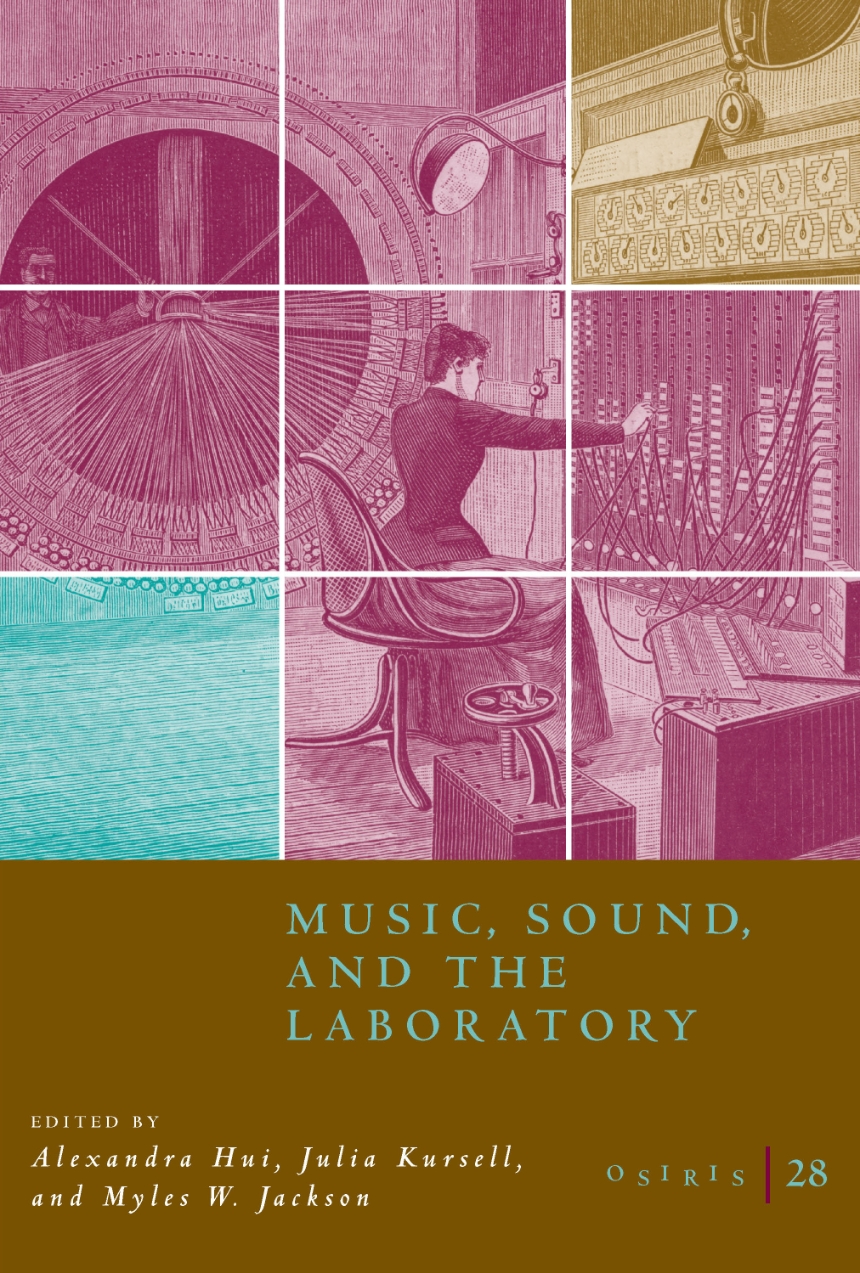Osiris, Volume 28
Music, Sound, and the Laboratory from 1750-1980
The understanding of sound underwent profound changes with the advent of laboratory science in the nineteenth and twentieth centuries. New techniques of sound visualization and detection, the use of electricity to generate sound, and the emergence of computers radically reshaped the science of acoustics and the practice of music. The essays in this volume of Osiris explore the manifold transformations of sound ranging from soundproof rooms to psychoacoustics of seismology to galvanic music to pedaling technique. They also discuss more general themes such as the nature of scientific evidence and the development of instruments and instrumentation. In examining the reciprocity between music and science, this volume reaches a new register in the evolution of scientific methodology during the nineteenth and twentieth centuries.
Table of Contents
INTRODUCTION
Music, Sound, and the Laboratory from 1750 to 1980
Alexandra Hui, Julia Kursell, and Myles W. Jackson
TECHNIQUES OF EVIDENCE
Thomas Young’s Musical Optics: Translating Sound into Light
Peter Pesic
The Electrical Imagination: Sound Analogies, Equivalent Circuits, and the Rise of Electroacoustics, 1863–1939
Roland Wittje
The Aesthetics of the Signal: Noise Research in Long-Wave Radio Communications
Daniel Gethmann
Listening to the Cold War: The Nuclear Test Ban Negotiations, Seismology, and Psychoacoustics, 1958–1963
Axel Volmar
PHENOMENOTECHNIQUE OF SOUND
Mineral Sound or Missing Fundamental: Cultural History as Signal Analysis
Bernhard Siegert
Changeable Ears: Ernst Mach’s and Max Planck’s Studies of Accommodation in Hearing
Alexandra Hui
The Audiovisual Field in Bruce Nauman’s Videos
Armin Schäfer
Camera Silenta: Time Experiments, Media Networks, and the Experience of Organlessness
Henning Schmidgen
CIRCULATION OF SOUND OBJECTS
Experiments on Tone Color in Music and Acoustics: Helmholtz, Schoenberg, and Klangfarbenmelodie
Julia Kursell
Craftsmen-Turned-Scientists? The Circulation of Explicit and Working Knowledge in Musical-Instrument Making, 1880–1960
Sonja Petersen
Listening to the Piano Pedal: Acoustics and Pedagogy in Late Nineteenth-Century Contexts
Elfrieda Hiebert
“A Towering Virtue of Necessity”: Interdisciplinarity and the Rise of Computer Music at Vietnam-Era Stanford
Cyrus C. M. Mody and Andrew J. Nelson
Toward a New Organology: Instruments of Music and Science
John Tresch and Emily I. Dolan
Notes on Contributors
Index
Music, Sound, and the Laboratory from 1750 to 1980
Alexandra Hui, Julia Kursell, and Myles W. Jackson
TECHNIQUES OF EVIDENCE
Thomas Young’s Musical Optics: Translating Sound into Light
Peter Pesic
The Electrical Imagination: Sound Analogies, Equivalent Circuits, and the Rise of Electroacoustics, 1863–1939
Roland Wittje
The Aesthetics of the Signal: Noise Research in Long-Wave Radio Communications
Daniel Gethmann
Listening to the Cold War: The Nuclear Test Ban Negotiations, Seismology, and Psychoacoustics, 1958–1963
Axel Volmar
PHENOMENOTECHNIQUE OF SOUND
Mineral Sound or Missing Fundamental: Cultural History as Signal Analysis
Bernhard Siegert
Changeable Ears: Ernst Mach’s and Max Planck’s Studies of Accommodation in Hearing
Alexandra Hui
The Audiovisual Field in Bruce Nauman’s Videos
Armin Schäfer
Camera Silenta: Time Experiments, Media Networks, and the Experience of Organlessness
Henning Schmidgen
CIRCULATION OF SOUND OBJECTS
Experiments on Tone Color in Music and Acoustics: Helmholtz, Schoenberg, and Klangfarbenmelodie
Julia Kursell
Craftsmen-Turned-Scientists? The Circulation of Explicit and Working Knowledge in Musical-Instrument Making, 1880–1960
Sonja Petersen
Listening to the Piano Pedal: Acoustics and Pedagogy in Late Nineteenth-Century Contexts
Elfrieda Hiebert
“A Towering Virtue of Necessity”: Interdisciplinarity and the Rise of Computer Music at Vietnam-Era Stanford
Cyrus C. M. Mody and Andrew J. Nelson
Toward a New Organology: Instruments of Music and Science
John Tresch and Emily I. Dolan
Notes on Contributors
Index
